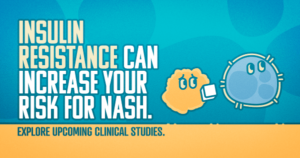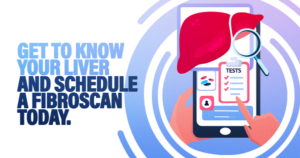When liver disease comes to mind, many are more familiar with the types that occur in heavy drinkers of alcohol or from hepatitis C. On the contrary, the most common chronic liver condition in Western populations is non-alcoholic fatty liver disease (NAFLD). NAFLD affects people who drink little to no alcohol, but face the same progressive liver damage as those who chronically abuse it. About 20% of people with NAFLD will progress to non-alcoholic steatohepatitis (NASH), a more dangerous form of fatty liver disease. With NAFLD on the rise, so is NASH, and it’s the elephant in the room.
Chronic Inflammation and NASH
Fatty liver disease is when too much fat begins accumulating in the liver. Some people have a simple fatty liver and will not have any issues, while about a quarter will progress to the NASH stage. For reasons we are still trying to understand, the excess accumulation of fat triggers the body’s healing response. Though this is meant to be a good thing, healing comes in the form of chronic inflammation. Over time, this well-meaning bodily function begins to scar and damage the liver, eventually affecting its function.
If not treated, NASH can progress to cirrhosis, liver cancer, and liver failure.
NASH Prevalence
Current estimates show that approximately 12% of Americans have NASH. The data also shows individuals progressing from NAFLD to NASH are projected to go up 63% by 2030. In the 2019 AMCP Nexus conference, physicians referred to NASH as the “elephant in the room” due to several factors:
- Despite the prevalence, there are currently no FDA-approved treatments for it.
- Health systems continue struggling with identifying which patients are at risk, as well as individuals already with advanced liver scarring. This is primarily due to:
- Having no way to tell which patients with NAFLD will progress to NASH.
- Varying experiences in disease progression for those who develop NASH. For instance, some individuals take many years, even decades, to progress to cirrhosis, while others are more rapid.
Unhealthy Diet + Inactivity= NASH
The silver lining for the future of NASH is that most of the top risk factors for this condition are preventable. In our Western culture, we love our unhealthy food and sedentary activities that leave our body with more fat than it can use, so the excess is stored in the liver. As waistlines continue to grow, so does our risk of NASH.

It can take years for NASH to develop, and most people don’t know they have it because symptoms are not typically present until the later stages. By being aware of the risk factors for NASH, you can begin to make healthier choices and begin regular liver monitoring with your provider.

NASH risk factors include:
- Obesity
- High blood pressure
- High cholesterol
- Type 2 diabetes
- Unhealthy diet
Hope is on the horizon with research ongoing across the globe into NASH treatments. Clinical Pharmacology of Miami has several current and future research studies on liver health and potential treatments. Click on the links below to learn more or contact us at (305) 817-2900.

- FREE fibroscan for adults at risk of liver disease
- Females with liver impairment
- Adults with liver disease
- Adults with NASH
Sources:
https://www.pfizer.com/news/featured_stories/featured_stories_detail/the_growing_epidemic_of_non_alcoholic_steatohepatitis_nash_fatty_liver_diseasehttps://www.healthwellfoundation.org/wp-content/uploads/2020/10/NASH.pdf













